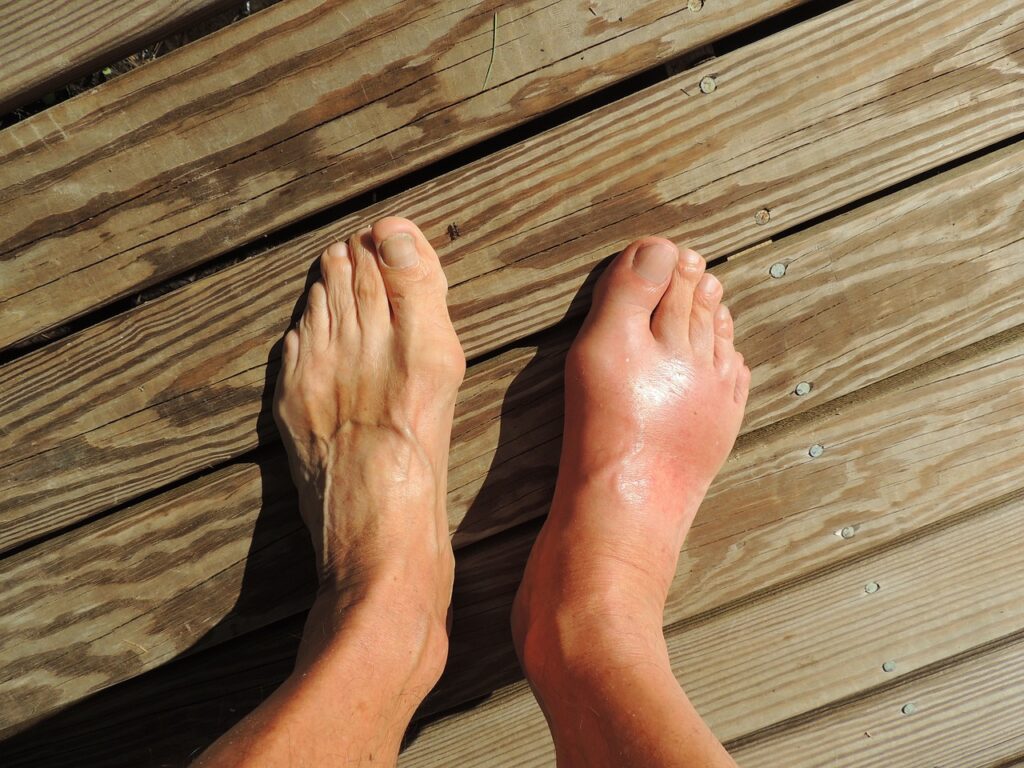If you feel soreness or pain in your joints, see a doctor. Finding the source of your joint pain and implementing an appropriate therapy or treatment plan will help you feel better.
If the painful symptoms don’t go away, you might need to see a rheumatologist or another expert who treats conditions affecting the bones, muscles, joints, ligaments, and tendons.
arthritis in the bones.
Osteoarthritis
When cartilage deteriorates and the bones rub against one another, pain and swelling result from osteoarthritis (OA). The knees, hips, neck, lower back, fingers, base of the thumb, and big toe are frequently affected by OA.
One of the most prevalent chronic joint disorders, OA affects around 32.5 million people in the US. The majority of OA patients are elderly. Nonetheless, OA can strike anyone. Obesity and overweight raise the risk of osteoarthritis. OA is also caused by overuse of the joints, such as by years of sustained participation in a sport.
Chief of rheumatology at the University of Nebraska in Omaha James R. O’Dell, MD, told Health that “if it gets worse the more you do, and the more you’re up and down after activities of a day, that makes us think more of an osteoarthritis situation and not an inflammatory situation.”
The use of over-the-counter (OTC) pain medications and exercise can help reduce uncomfortable symptoms.
An inflammatory condition known as psoriatic arthritis (PsA) results in persistent inflammation at the joints of tendons and ligaments with the bone. Although PsA can start at any age, it often manifests in people between the ages of 30 and 50. Approximately 30% of psoriasis sufferers also have PsA.
Among the most typical PsA symptoms are the following:
– Joint discomfort
– Bloating
– rigidity
The major reason managing PsA might be difficult is since there is no known cure. A rheumatologist may recommend therapies aimed at reducing pain, preserving as much range of motion, and delaying or halting the advancement of PsA.
The Rheumatoid Joint
The autoimmune condition rheumatoid arthritis (RA) affects the joints. Many joints on both sides of the body, including the hands and knees, experience pain, stiffness, and edema due to RA. Fever, exhaustion, weakness, and weight loss are possible additional symptoms. RA affects 0.24% of the global population, far fewer persons than OA.
Since RA is an autoimmune illness, healthy cells are unintentionally attacked by the immune system. To put it another way, lungs, heart, and eyes are just a few of the tissues and bodily organs that can be impacted by RA.
A medical professional treating RA may suggest lifestyle modifications and medicines to avoid joint deterioration and relieve excruciating symptoms. Surgery can be necessary in severe RA cases.
Lupus
Lupus is an autoimmune disease, just like RA and PsA. Apart from the joints, lupus affects numerous bodily components such as the skin, kidneys, heart, and lungs.
Individual differences exist in lupus symptoms, which can include the following:
– Anemia
– Clotting of the blood
– chest ache
– Overwhelming exhaustion
– High temperature
– hair thinning
– renal issues
– memory issues
– Joint and muscle soreness
– rashes
Lupus has no known treatment. Nonetheless, a lot of lupus sufferers lead long, robust lives. A medical professional can create a treatment strategy that both stops flare-ups and relieves symptoms as they arise.
Gout
One type of arthritis that frequently produces excruciating pain is gout. One joint at a time is affected by gout, which usually starts at the big toe. Gout is brought on by elevated blood uric acid levels. The byproduct of purines found in red meat, beer, turkey, liver, and turkey is uric acid.
Gout symptoms might sometimes flare up and then go away. Gout symptoms might sometimes flare up and then go away. Severe flare-ups may endure for several days or weeks. Flares are usually triggered by alcohol and high-fructose foods and beverages.

Gout is very manageable. For instance, being obese or overweight raises the chance of developing gout. As a result, reducing weight can aid in relieving knee and hip pain. A medical professional may also suggest taking medicine and steering clear of purine-rich meals like red meat, herring, and scallops.
Lyme Disease
One of the numerous potential signs of the tick-borne illness Lyme disease is joint discomfort. A recognizable “bulls-eye” rash is one of the primary early indicators of Lyme disease. Joint discomfort is then one of the final symptoms, which typically appears weeks or months after a tick bite. Painful sensations can develop in the jaw, shoulders, hips, or knees.
Lyme disease usually typically affects one or two joints at a time. With time, joint discomfort gets less acute and less frequent. Yet, if left addressed, joint injury may become irreversible. If you have Lyme disease, it is imperative to receive an early diagnosis, treatment, and continued care.
Insufficient thyroid function
Numerous body processes are regulated by the thyroid, a butterfly-shaped gland located in front of your neck. When the thyroid gland is underactive, it is known as hypothyroidism. Insufficient thyroid hormone production can cause changes in your body, such as joint pain.
Symptoms of hypothyroidism, besides joint pain, include:
– variations in heart rate
– alterations in mood, such as depression
– dry hair and skin
– Weary
– I’m feeling chilly
– An engorged lump in the middle of your neck, next to your thyroid gland, is called a goiter.
– Unable to conceive
– irregular bowel motions
– heavy and irregular menstrual flow
– Gaining weight
Speak with your doctor if you believe you could have an underactive thyroid. Hormone therapy is part of the treatment.
The fibromyalgia
Numerous symptoms of fibromyalgia include fatigue, memory issues, pain in the muscles and joints, and generalized discomfort. In the US, 2% of adults suffer from fibromyalgia.
A specialized test to detect fibromyalgia does not exist. As a result, fibromyalgia diagnosis frequently takes a long time. A medical professional may suggest painkillers, aerobic and strengthening activities, stress reduction techniques, and cognitive behavioral therapy (CBT) in order to treat symptoms.


